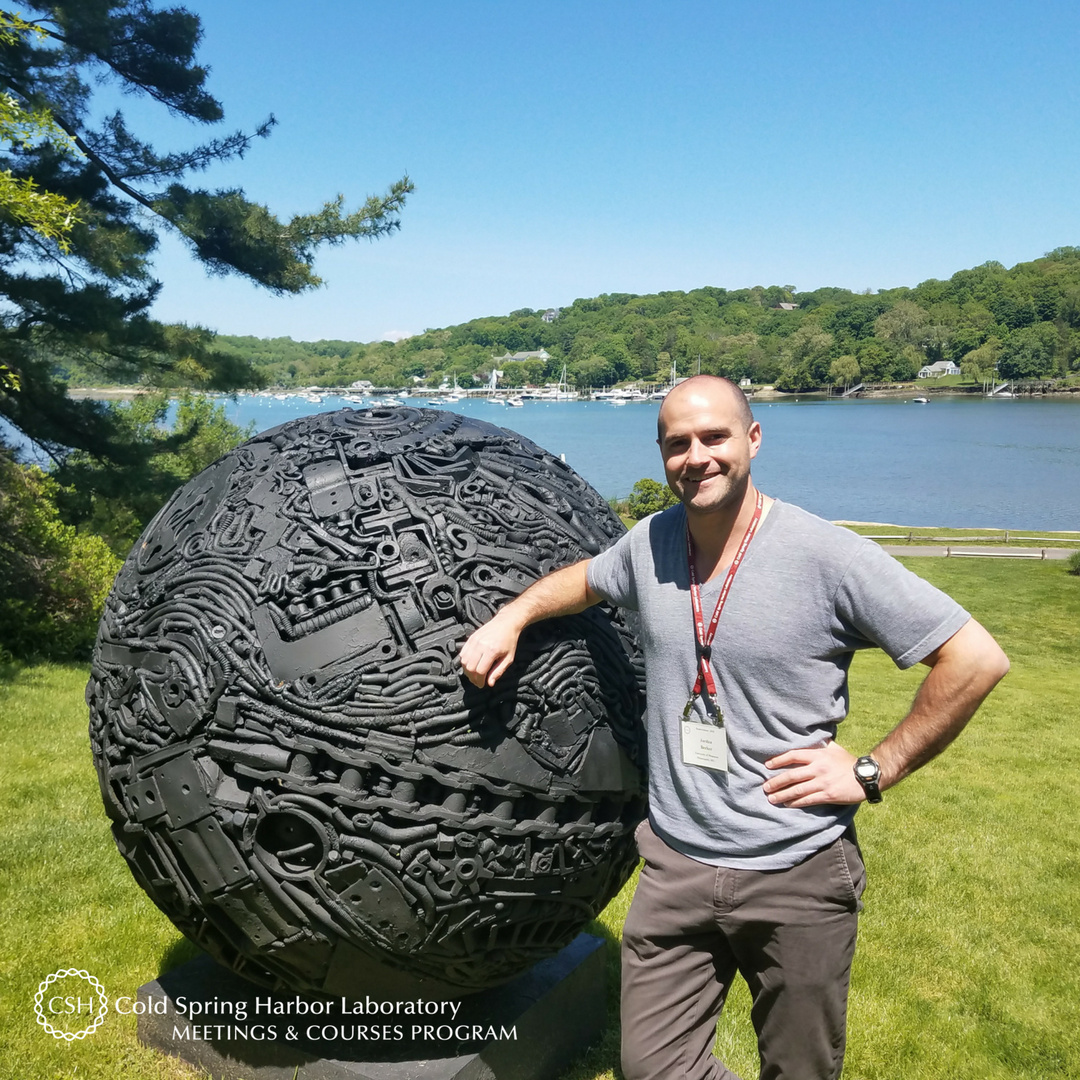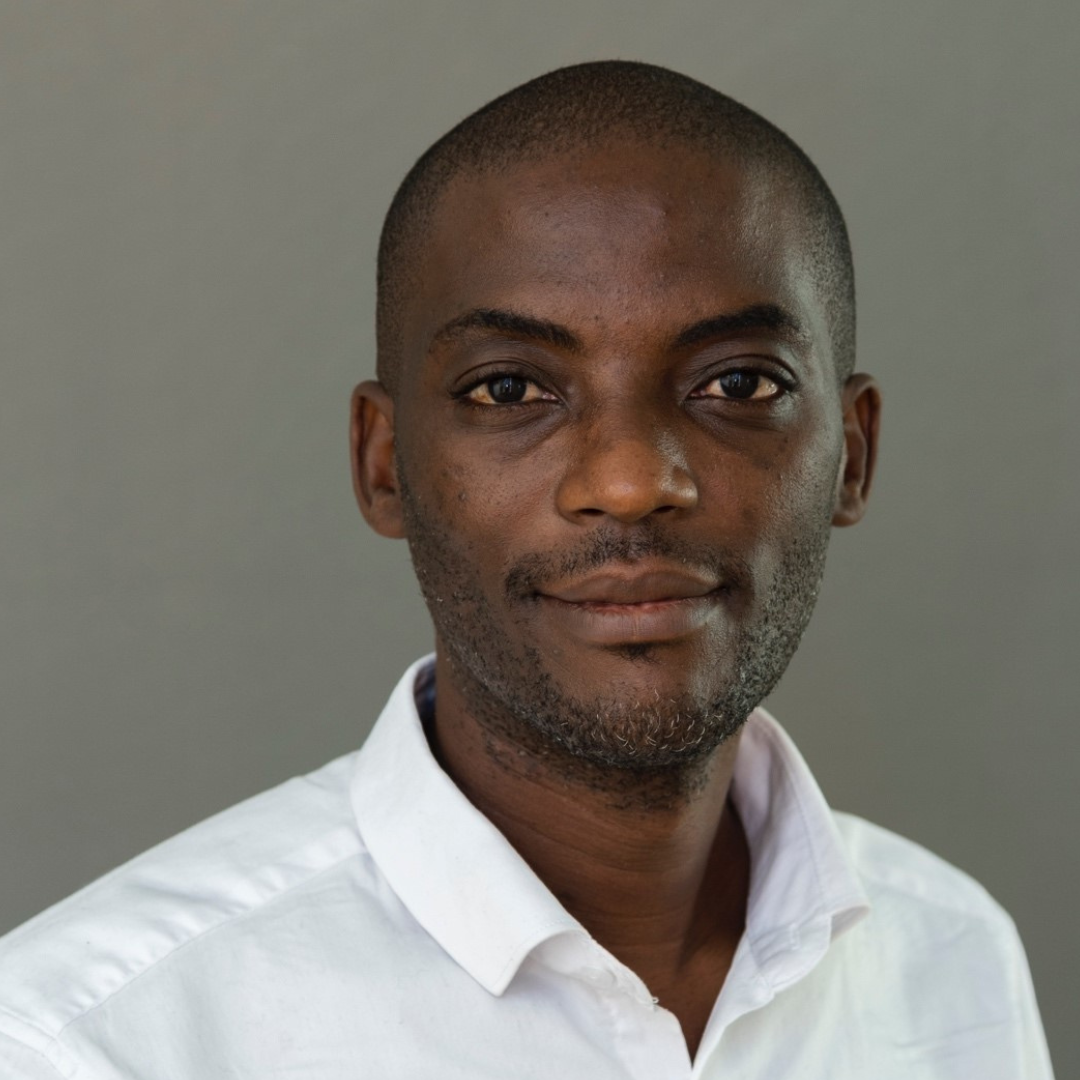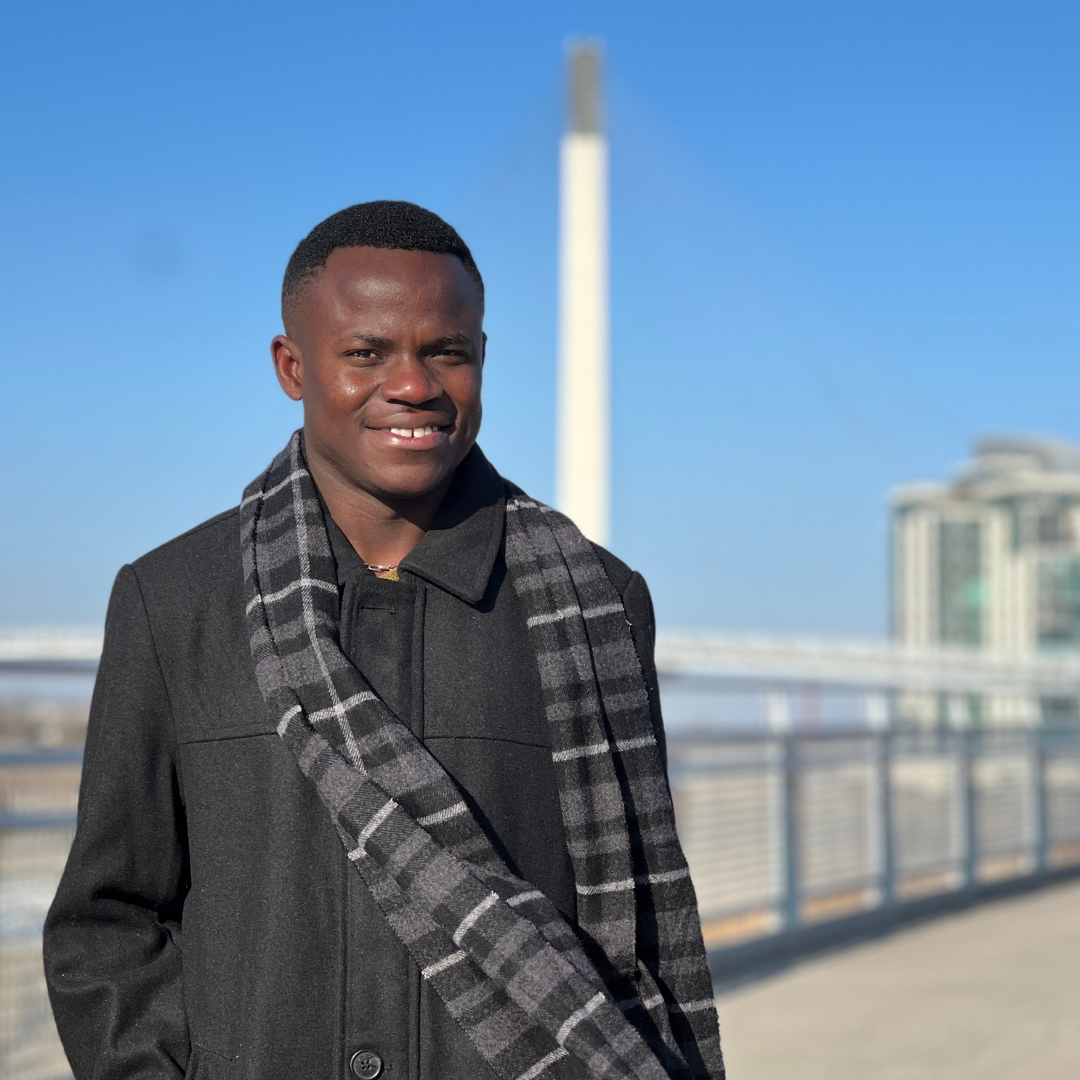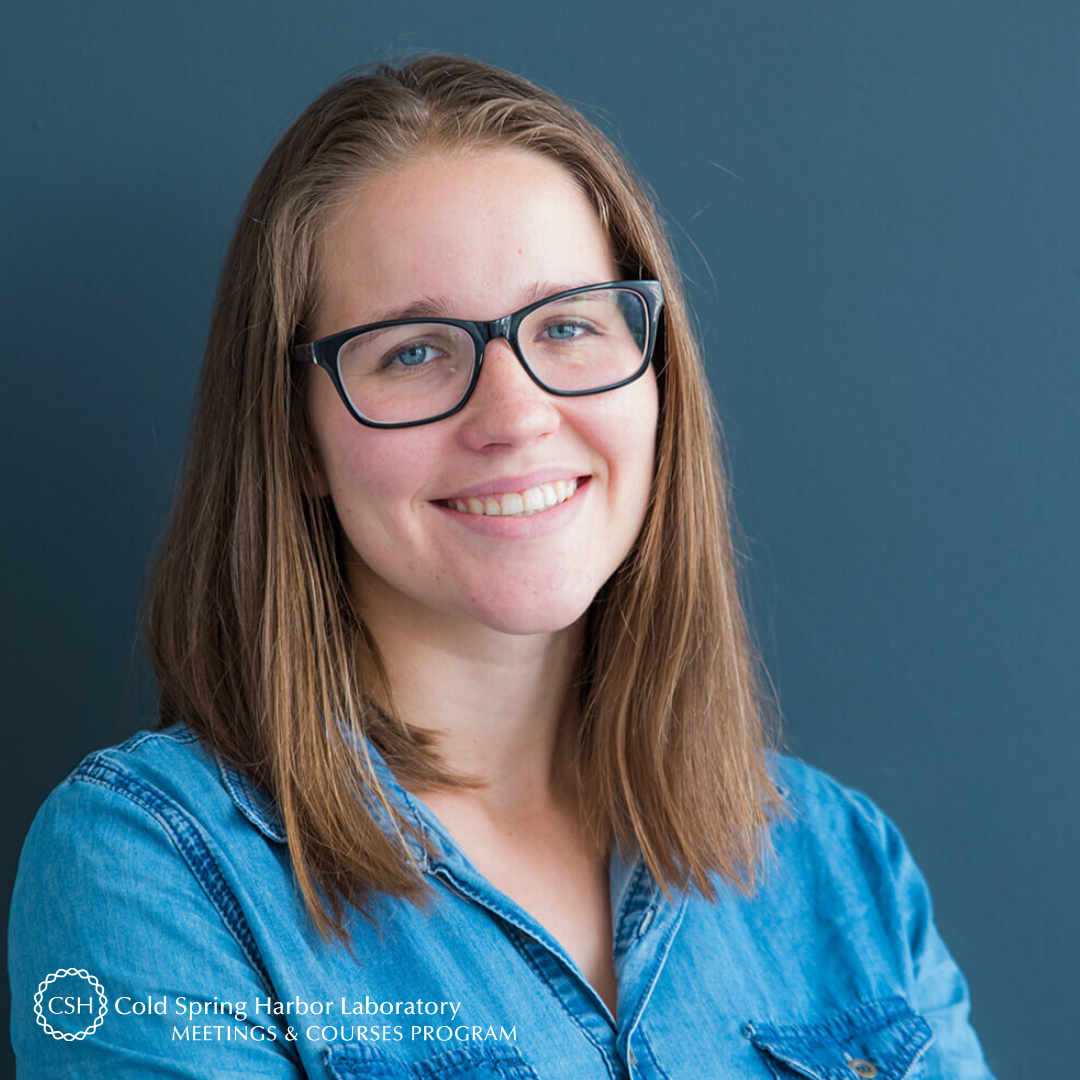Meet Katherine “Kate” Nesbit of San Diego State University! Kate is a postdoctoral researcher in Dr. Nicholas Shikuma’s lab and is taking part in the 2022 course of Advanced Bacterial Genetics. This is her first course at CSHL and the first in-person course since COVID-19 began in 2020. Here is what Kate has to say of her experience so far:
I would just like to commend the instructors and the course organizers from CSHL for all of the work they did to ensure the class ran as smoothly as possible. It was so refreshing to come together for an intensive science experience and I have really enjoyed the opportunity to be here and be inspired by everyone’s work.
Tell us about your research.
Bacteria in the ocean play essential roles in the lives of marine animals. I study how larvae (the babies) of marine animals can sense and respond to bacterial cues that drive major changes in development (like turning into an adult).
How did you decide to focus on this area/project?
Life evolved in the worlds’ oceans, the epicenter for microbial life. The microbes around us play major roles in our biology. Relationships with bacteria, often thought of as “good” or “bad”, in reality, exist on a spectrum. At the end of my PhD, I was curious to learn more about the context surrounding microbes and their relationships with marine invertebrates. So many marine larvae rely on bacteria during their life cycles and have diverse interactions with bacteria. The opportunity to work with the Shikuma Group and our model system, the tube worm Hydroides and its microbes, was an exciting opportunity. This humble worm is actually a powerful model for understanding symbioses. Bacteria are required for the larva of the worm to undergo metamorphosis which is a process where they transition to the adult body plan. My interests in marine invertebrates, developmental biology, and how animals interact with bacteria all led me to build my research questions around this area.
What and/or who is the inspiration behind your scientific journey?
I have been very fortunate to work with some fantastic mentors during my training, and of course my family has been immeasurably supportive. I also have been learning alongside some really amazing peers, and the summation of my interactions with all of these people have helped keep my excited and motivated to continue moving forward towards a career in science.
What impact do you hope to make through your work?
I hope that the work I do will encourage other minority women in science to embrace their curiosity and make new discoveries that help us understand fundamental processes of life. I also hope my work can impact others by encouraging them to protect our oceans and all of the amazing biology that happens within them. Finally, I hope to impact others by making some meaningful scientific discoveries, leaving behind a legacy of collaboration and of creating opportunities for others to be part of science.
Where do you see yourself in five years?
In five years, I would love to be starting up my own lab. I hope to establish an independent research program that works on answering questions at the interface of marine cell-, developmental-, and micro- biology.
What do you love most about being a researcher?
The thing that I love the most about being a researcher is that my days are always different. I never get bored doing the same thing because some days I am reading, some days I am writing papers or working on a presentation for a conference, and still other days I get to be at the bench doing experiments or imaging on the microscope. It never gets dull because there is always something new to do and learn. Also, I have a soft spot in my heart for all the squishy, crunchy, gooey critters of the ocean. There’s so much interesting biology going on in these critters that is understudied.
What drew you to apply to this course?
When I started in research as an undergraduate, I immediately fell in love with developmental biology, but it wasn’t until much later that I started learning about the ways that microbes influence development. The course on Advanced Bacterial Genetics is the ideal way to learn modern tools and techniques for understanding the relationships between bacteria and the animals that they interact with. Without tools for manipulating microbes, we can’t fully grasp the contributions they make at the molecular and genetic level to the biology of their symbionts and hosts. The reputation of CSHL as being an immersive and inspiring place, as well as the fact that I know colleagues who spoke highly of the course, were all contributing factors in my desire to attend this course.
What is your key takeaway from the Course; and how do you plan to apply it to your work?
I think one of the most influential lessons that I have learned in the course is that bacterial genetics offers a multitude of approaches for answering big questions in biology, and these tools can be applied in various permutations to all sorts of different systems. This experience has helped me to brainstorm new ideas for experiments in my own work. For example, I would love to take the tools I’ve learned about here (like generating gDNA libraries, transposon libraries, CRISPRi, and RIVET) and apply them in marine bacteria – which currently lack a lot of the accessible tools that are available to more widely studied model microbes. This would help us to better understand what genes in diverse marine microbes contribute to their ability to induce developmental changes in the tube worm model (and maybe even other invertebrates too).
What feedback or advice would you share with someone considering to participate in this course?
My biggest piece of advice would be to come with an open mind. You will meet so many people with diverse scientific backgrounds and with diverse identities. You can learn so much from your peers and the instructors if you approach the experience with the goal of learning from everyone.
What’s the most memorable thing that happened during the Course?
The most memorable moment of the course for me so far has been the unbridled enthusiasm of one of our instructors over their model microbe – it’s not uncommon to hear her shout “Staphylococcus!” and I think it’s so awesome that people can build their careers and still maintain that level of excitement for their work!
What do you like most about your time at CSHL?
My favorite thing about my time at CSHL so far has been the campus. It’s just beautiful and it has been a real treat to see this part of the state, especially since I have never been to New York before!
Kate received a scholarship from the Regeneron to cover a portion of her course tuition. On behalf of Kate, thank you to Regeneron for supporting and enabling our young scientists to attend a CSHL course where they expand their skills, knowledge, and network.
Thank you to Kate for being this week's featured visitor. To meet other featured scientists - and discover the wide range of science that takes part in a CSHL meeting or course - go here.
Images provided by Kate Nesbit






























































